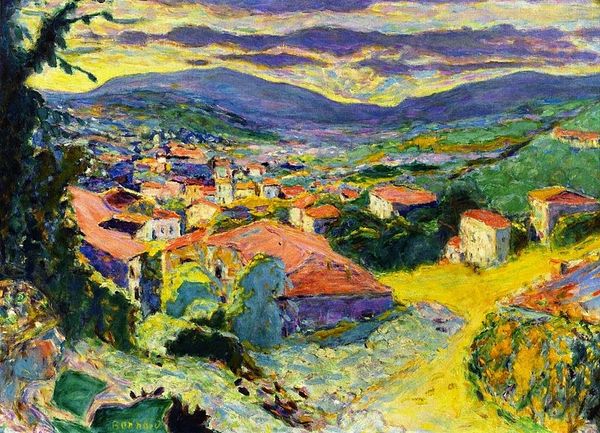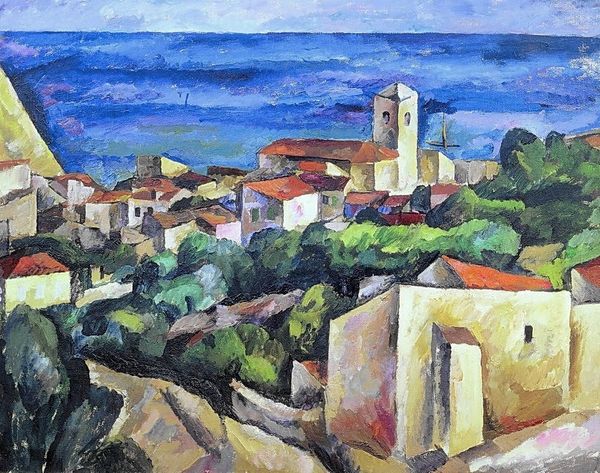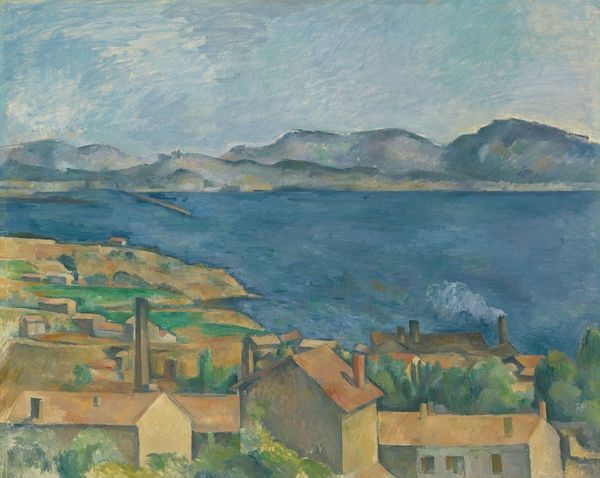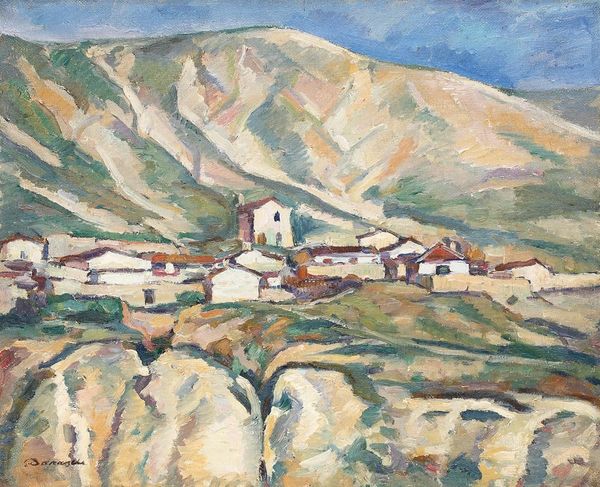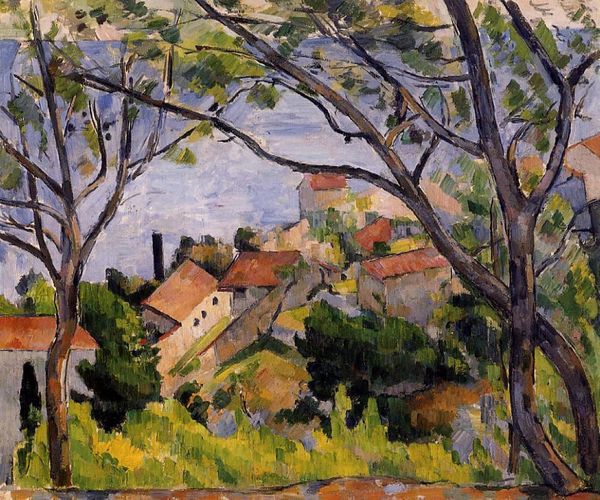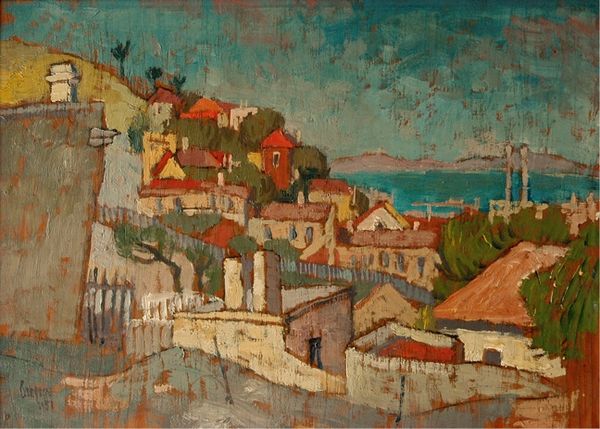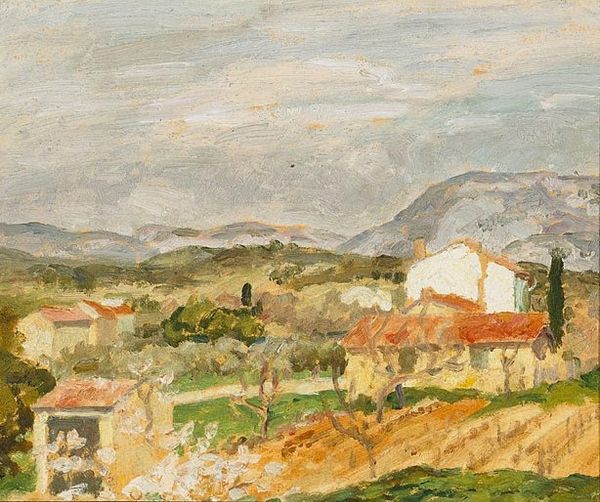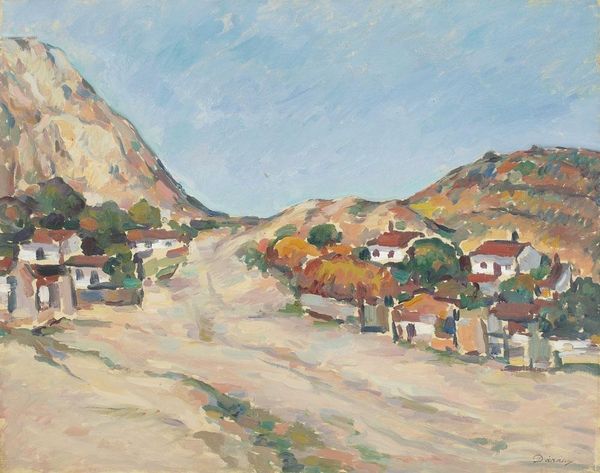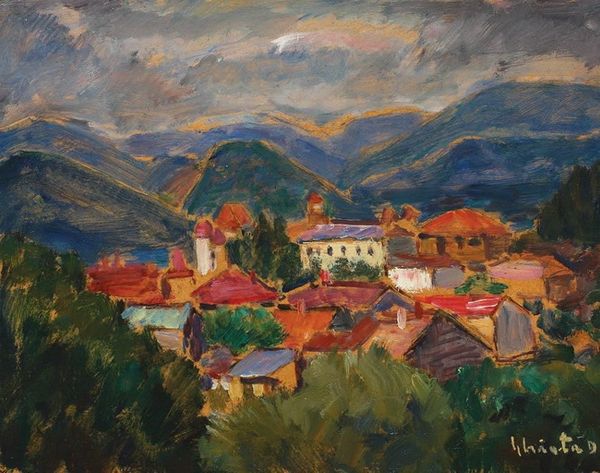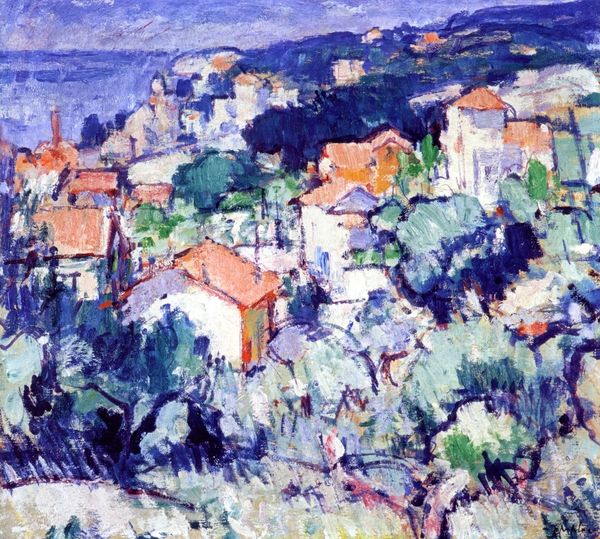
Copyright: Public domain
Curator: Looking at Stefan Dimitrescu's "Balchik Gulf," painted around 1930, I’m struck by how the village nestles into the landscape. The town feels almost cradled by the land itself. Editor: Yes, it's immediately apparent— the vibrant brushwork really emphasizes the materiality of the scene. Look at how thickly the paint is applied! You can almost feel the texture of the walls, the foliage, even the movement of the water. Curator: I see a lot of identity at play in his landscapes. Dimitrescu, along with other artists of his generation, were invested in representing Romanian identity through visual representations of its lands. Balchik, for instance, became a symbolic place for artists during that interwar period. They converged to capture, or rather, construct, an idea of cultural belonging. Editor: And how does this sense of belonging materialize in the painting itself? Note how the roofs are this striking shade of orange. I can tell that the artist used pigments with high tinting strength, a strategic choice to draw the eye. How was that paint produced and who had access to those materials in 1930s Romania? Curator: The colors and light remind me a bit of post-impressionism, yet there’s a very local flavor in the way he frames the relationship between nature and these man-made structures. The gaze feels both inside and outside, speaking to the liminal cultural and political space that Romania inhabited. I wonder what it meant to paint this scene in that specific period, thinking of the rise of nationalism and the shifting geopolitical dynamics in the Balkans. Editor: It’s fascinating to think about the location informing the materiality of the work, as well. Was Dimitrescu using locally sourced pigments, perhaps? I agree the hues are interesting; the turquoise waters offset by the sun-drenched cliffs... These details point to deliberate material choices. What local resources were accessible? Curator: Thinking about Balchik as a haven for artists, predominantly men, at that time makes me question the narratives around it as some idyllic location divorced from power relations. What narratives were consciously and unconsciously perpetuated through paintings like this one? Editor: This pushes me to further wonder if local craftsmen were involved in preparing Dimitrescu's canvases or grinding his pigments, and how their labor may be rendered invisible. Thinking about the economic context alongside artistic expression opens a richer conversation. Curator: Agreed, bringing labor into the conversation is paramount, to reconsider and further add to this notion of national identity, beyond picturesque representation. Editor: Right, understanding art requires understanding production, distribution, and consumption, and their intertwining layers.
Comments
No comments
Be the first to comment and join the conversation on the ultimate creative platform.
